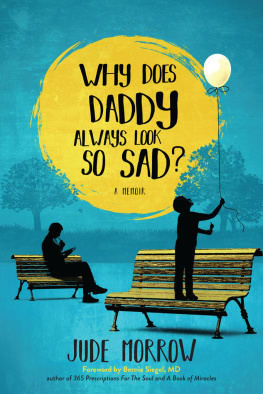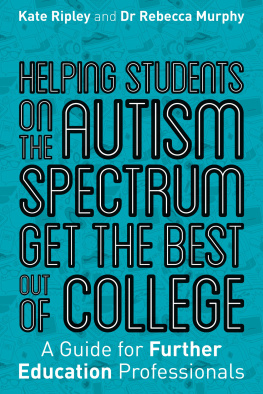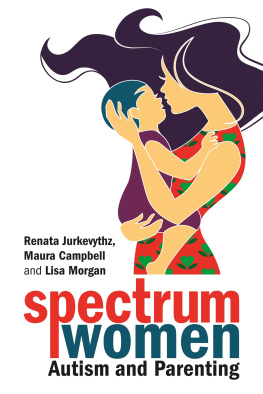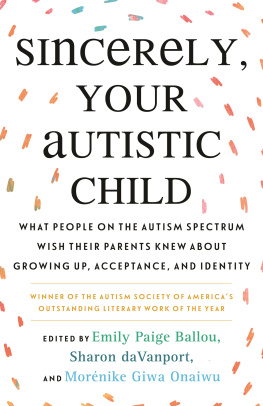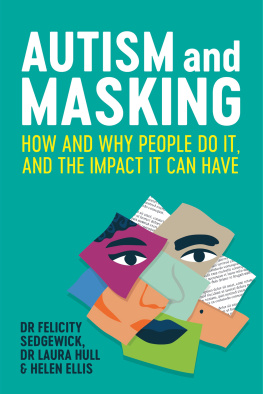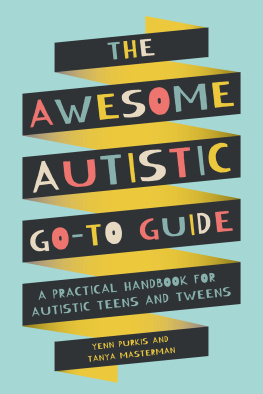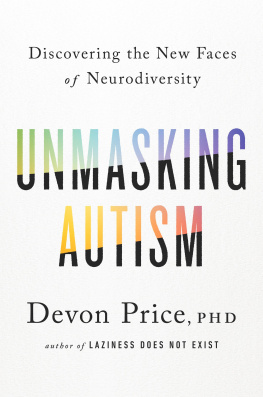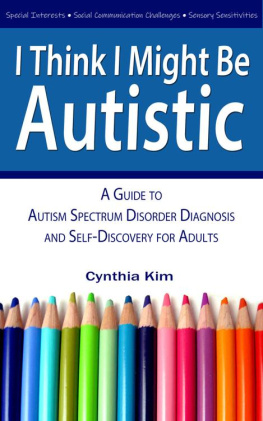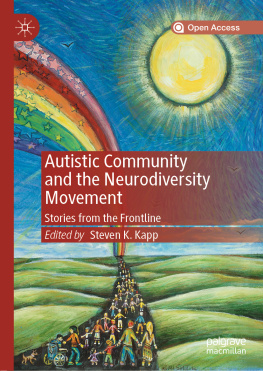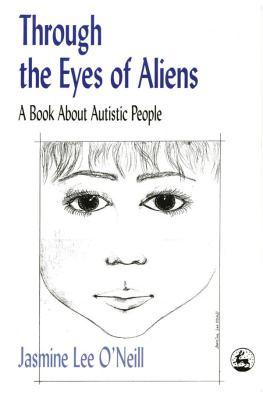Contents
Guide
A Neurodiversity Blueprint
Loving Your Place on the Spectrum
Jude Morrow
Foreword by Tim Goldstein

1750 S.W. Skyline Blvd, Suite 20
Portland, Oregon 97221-2543
503-531-8700 / 503-531-8773 fax
www.beyondword.com
First Beyond Words paperback edition September 2021
Copyright 2021 by Jude Morrow
All rights reserved, including the right to reproduce this book or portions thereof in any form.
The information contained in this book is intended to be educational and not for diagnosis, prescription, or treatment of any health disorder whatsoever. It is intended to provide helpful and informative material on the subjects addressed in the publication. It is sold with the understanding that the author and publisher are not engaged in rendering medical, health, or any other kind of personal professional services in the book. The reader should consult his or her medical, health, or other competent professional before adopting any of the suggestions in this book or drawing inferences from it. The author and publisher specifically disclaim all responsibility for any liability, loss, or risk, personal or otherwise, which is incurred as a consequence, directly or indirectly, of the use and application of any of the contents of this book.
BEYOND WORDS PUBLISHING and colophon are registered trademarks of Beyond Words Publishing. Beyond Words is an imprint of Simon & Schuster, Inc.
For more information about special discounts for bulk purchases, please contact Beyond Words Special Sales at 503-531-8700 or .
Managing editor: Lindsay S. Easterbrooks-Brown
Editor: Brit Elders
Copyeditor: Ashley Van Winkle
Proofreader: Olivia Rollins
Design: Devon Smith
Composition: William H. Brunson Typography Services
Cover design by Spiffingcovers and Devon Smith
Library of Congress Cataloging-in-Publication Data:
Names: Morrow, Jude, 1990- author.
Title: Loving your place on the spectrum : a neurodiversity blueprint / Jude Morrow ; foreword by Tim Goldstein.
Description: First Beyond Words hardcover edition. | Portland, Oregon : Beyond Words, 2021. | Includes bibliographical references.
Identifiers: LCCN 2021011054 (print) | LCCN 2021011055 (ebook) | ISBN 9781582708331 (trade paperback) | ISBN 9781582708386 (ebook)
Subjects: LCSH: Aspergers syndromePatients. | Autism spectrum disordersPatients. | Autistic peopleFamily.
Classification: LCC RC553.A88 M6789 2021 (print) | LCC RC553.A88 (ebook) | DDC 616.85/8832dc23
LC record available at https://lccn.loc.gov/2021011054
LC ebook record available at https://lccn.loc.gov/2021011055
The corporate mission of Beyond Words Publishing, Inc.: Inspire to Integrity
For all autistic and neurodiverse people, young and old.

Foreword
by Tim Goldstein
I met Jude on LinkedIn, where I frequently meet fascinating autistic professionals of all backgrounds, industries, races, genders, and countries. Jude did something many think autistic folks are incapable of and most people connect with them, miss. He introduced himself with a very short yet professional overview of himself and his book. He made a specific request: Would you help me to spread the word? I read his book and we had a long video chat. I found a new friend who gets it!
Judes work immerses him in a world where being autistic is frequently seen as something to fix. With the experience of building a successful autistic adult life, he knows the truth is quite different. Jude writes in a clear and humorous style which recognizes all humans fit in the Neuro Cloud with its full range and mixture of all possible human traits.
The world is slowly waking up to the fact that autism is not just young boys. In the adult autistic community and moving into the rest of the world is a uniting movement: neurodiversity. Instead of looking at the majority of humans as normal and those who perceive, process, or think differently as broken normal people who need to be fixed, I see it through the neurodiverse, humanity-encompassing Neuro Cloud concept. This model of neurodiversity aligns with general diversity by acknowledging it takes all humans to express the full range of diversity and all ways of thinking for the full range of human neurodiversity.
Neurodiversity is the idea that our brains vary greatly in how they are shaped, how they are wired, and how they function. Further, we believe these differences cause a range of perception, processing, and thinking methods. The Neuro Cloud concept arranges the building blocks of neurodiversity, presented by Judy Singer in her thesis paper, so they parallel diversity in the way the words and thoughts mix. There has not been a universal definition of neurodiversity or the words used to describe it. People are left unclear whether a non-neurotypical is neurodistinct, neurodiverse, or neurodivergent. It leaves many confused and others clinging to wording which doesnt logically make sense.
The Neuro Cloud starts with the belief that neurodiversity includes every way humans can think or be. No one lives outside the cloud. Aligning with diversity helps many understand neurodiversity by putting it in a context more widely known. Diversity talks about the makeup of a group as being diverse or not. In the Neuro Cloud, neurodiverse is not a name for a sub-population, but like diversity, a relative representation regarding the makeup of a group. When I say a group is neurodiverse, I am telling you it has a representative mix of perceiving and thinking styles, just as saying the group is diverse means a representation of all diversity. It does not indicate specific styles, just inclusion of a wide range of styles.
If neurodiversity means everyone, how do we refer to general groupings which see the world in different ways? Humans have a historical pattern where a large segment perceives and thinks in similar ways. This creates a dominant group that most consider normal. In neurodiversity, just as with diversity, this majority group believes their ways are right because their vast numbers make them common. While they are not defined by any special characteristic besides their numbers, we refer to them as neurotypical. There is nothing special about being neurotypical other than you are a member of the largest area of the Neuro Cloud.
The overwhelming size of the neurotypical community has allowed them to set the norms we live by and makes them predominate. With neurotypical being just one of many ways for humans to be, in the Neuro Cloud we refer to people who are not neurotypical as neurodistinct. Neurodistinct is easy to understand: someone who perceives, processes, or thinks in a distinctly different manner than neurotypicals. Not being neurotypical no longer means you are divergent, which seems like a negative curse word to me, but that you have distinctly different, alternate ways which may be improvements on the neurotypical norms.
Where does the cloud portion of the Neuro Cloud fit in besides that there are two main groups? Neurotypical is the majority and neurodistinct is the minority. In the Neuro Cloud we view all traits as human traits in varying levels. The cloud fits by illustrating how there are no distinct partitions or boundaries within it, but instead an ever-moving and ever-mixing set of traits and thinking. Through viewing all traits as human traits, we quickly recognize that the bundle of traits we associate with various mental and cognitive distinctions are not only arbitrary but frequently present in many without the particular condition.


